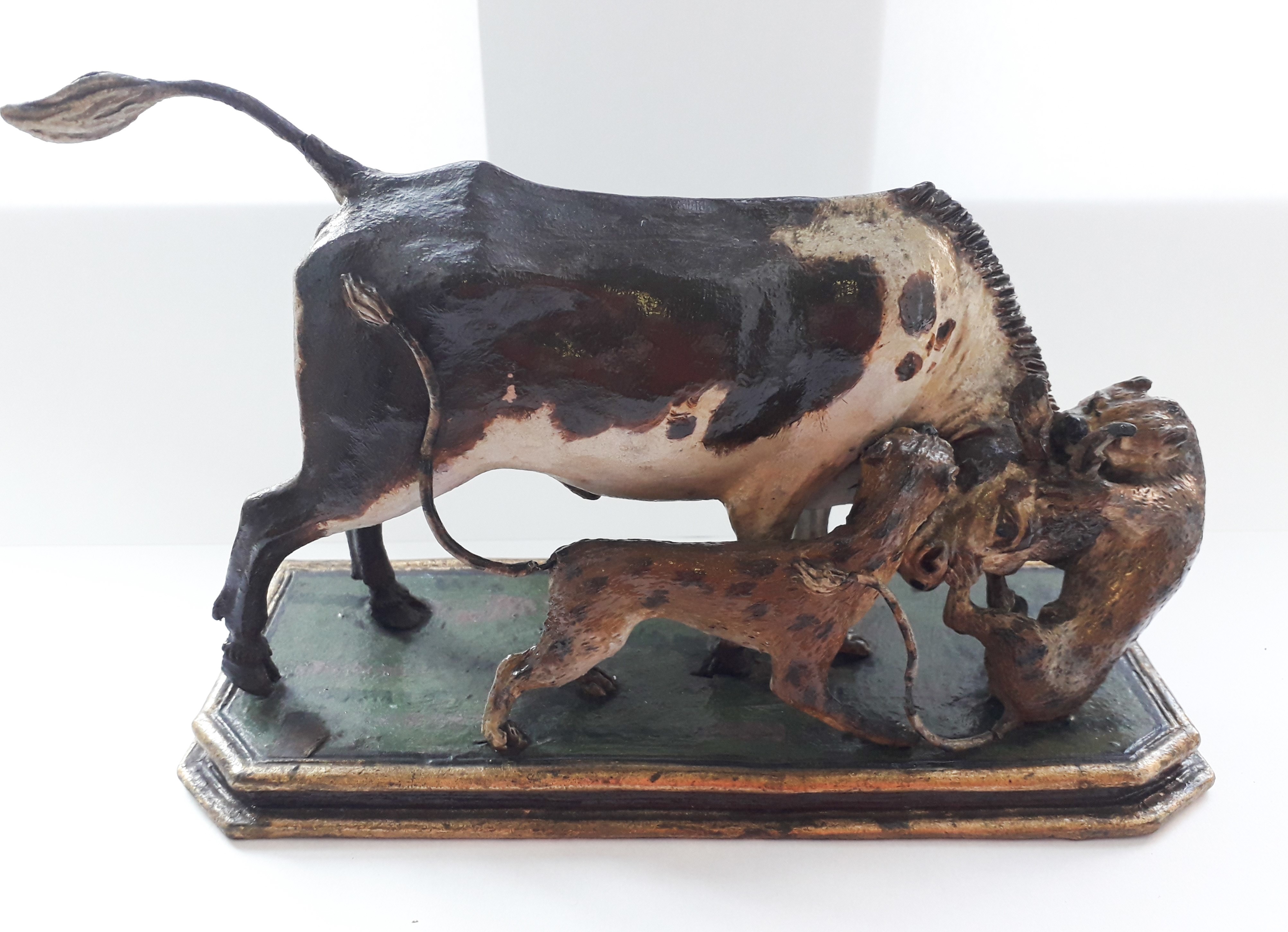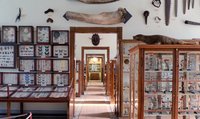Tonplastik auf einem Sockel. Eine geradezu blutrünstige Jagdszene zeigt diese Tonplastik eines Ochsen, der im Begriff ist, von zwei wilden Hunden am Kopf zerfleischt zu werden.
Die Tiergruppe wurde in magerem Ton von Hand auf ein Drahtgerüst aufmodelliert und polychromiert. Es handelt sich eine der berühmten Tierhatzgruppen des Bossierers Benedikt Fruth. Er gelangte erst um 1770 zu großer Bekanntheit, weil er selbst aus eher weniger qualitätvollen Tonen repräsentative Tafeldekorationen wie diese zu fertigen verstand. Eine Signatur weist die Plastik jedoch nicht auf.
Belegt im Linck-Index III (1787), S. 114, No. 251: "In Thon poußirte Jagden von sehr gutem Meister, bunt bemalht, zwey Stück. (aufgest. No. 251)"
en

